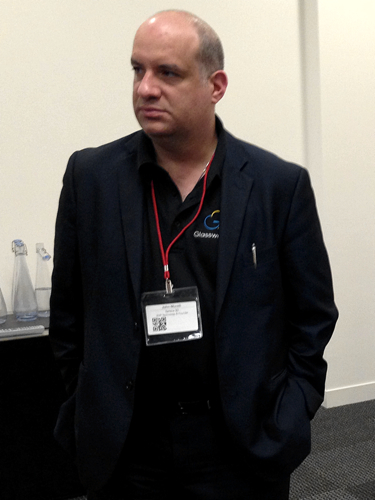This article is more than 1 year old
Sphere 3D's mini microvisor: Drilling into touchy biz tech
Apps without mobility... made mobile
Right, so how does it work?
Think of Glassware 2.0 as a thin hypervisor providing access to new or old hardware for an app and presenting that app's user interface to smartphones and tablets which are can't natively run the application. Bookman suggested that Overland's then CEO and Sphere 3D chairman came up with the microvisor term.

John Morelli
The application could run on hardware (servers) in the cloud. The DX2 Glassware Corel WordPerfect system being shown at Brian Madden's BriForum in London is, when we think about it, a converged server/storage system. one with a CPU and RAM designed for running a storage array; think 4 cores and 32 gig of RAM. We understand that Sphere 3D'as labs are working on ideas such as a DX2-type array with 64 cores and 1TB of RAM, a much better app execution engine.
The app in the Glassware server could be running on hardware it doesn't support care of Glasssware's microvisor hardware emulation; a PDP-11 demo was mentioned. The Glassware server could be in the cloud, with groups of them running some front-end software apportioning work to the others as remote client access requests come in.
Applications have to be interfaced to the Glassware microvisor and the support of remote phone and tablet clients has to be baked in. That sounds like some development effort by customers. The company claims: "Through Glassware 2.0, the process for “porting” and “publishing” applications is streamlined to the point that its practically automated, requiring very little administration input."
Okay, we already have technology which can do what it promises; what is the business problem this would solve? The applications which needs remote smart phone and tablet support with full app functionality cannot have a version that runs natively on these target devices. Browser access must be inadequate - imagine trying to use Excel through a browser interface.
Target device screen real-estate must not be a problem. Target device touch screen interfaces must be supported. Clearly Glassware's software must present the app properly, such that its appearance and functionality is not compromised by the target device's characteristics, like a touch screen interface.
Some functionality is obviously difficult. Imagine trying to print a spreadsheet table or database report from an iPhone. Yet if full functionality is what's claimed then this must be achieved somehow, perhaps by some wireless-using printer driver in the microvisor. Here lies potential support madness because of the myriad potential printers to be supported. Network access speed also needs considering.
So ... we're looking at apps that have more than a browser interface, no native smartphone or tablet version, none planned or practical, and can work within the limitations of the remote device's characteristics as seen through the microvisor.
There's probably a good business here if the licensing or use/revenue scheme can be worked out. Oh, and if the microvisor actually does what Sphere 3D says it does – and does it practically, reliably and efficiently. ®
